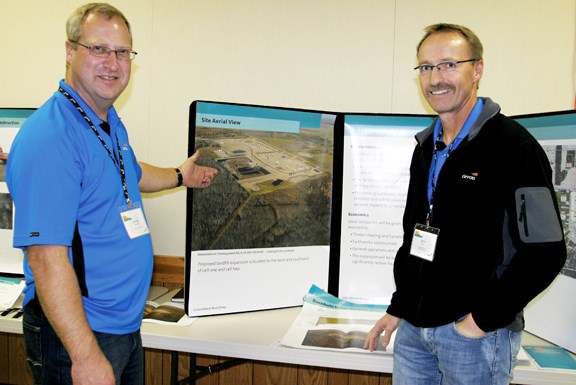Devon Canada met with area residents at Sandy Rapids Hall for an open house on Oct. 19.
People learned about the company's proposed landfill expansion project near Manatokan. The landfill's current two cells hold produced sand, a by-product from Devon's cold flow oil production in the region.
The company plans to increase capacity to over two million cubic metres over the lifetime of the project, and plans to build two cells by summer if the expansion receives approval.
The project will be built in phases. Devon hopes to get a permit to build landfill capacity that would last until 2028, based on its current production estimates.
The current and proposed landfill cells hold only produced sands, not commercial waste.
WorleyParson's Richard MacDonald was on hand to explain how the landfill is engineered. The landfill has a metre-thick compacted clay liner and is overlaid by a high-density polyethylene liner to prevent leakage. Ground water monitoring wells around the facility help detect the possibility of contamination.
“There's a lot of control measures in place to prevent any environmental impact,” said MacDonald.
Although sand is produced with the oil in the region, Devon doesn't consider it an oilsands operation. The resource doesn't require steam to extract and is buried 350 to 400 metres below the surface and is pumped to the surface.
“(Oilsands) is much higher density and high viscosity than what we have here,” said Mike Kelly, facilities engineer. “This oil will flow.”
The separation of the sand from oil begins in the holding tanks in the field. “The water, oil, and sand is already dropping out inside that production tank,” explained Armand Amyotte, production foreman at the Manatokan project.
A sand truck “de-sands” the tanks and brings it to a processing area where it is dewatered by gravity drainage before going to the landfill. Once it passes a paint filter test, it is moved to the landfill.
Devon employees also talked to the public about a prospective project near Barbara Lake. The company plans to take core samples over winter to determine whether or not to pursue drilling in that area.



